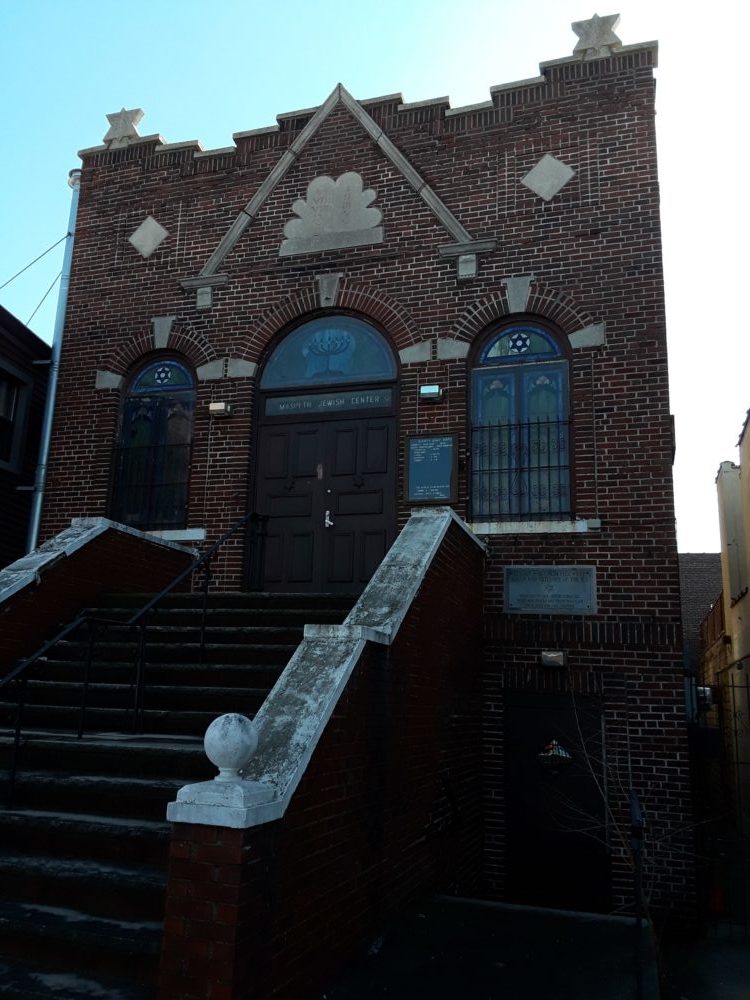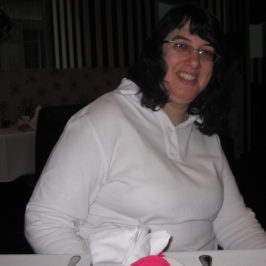Over the years, I have learned to create meaningful photography projects. To this end, I have photographed hundreds of buildings in New York City and elsewhere in the United States and Europe that I refer to as “lost synagogues.” These are buildings that previously housed Jewish congregations (and related institutions such as schools and charitable groups) but have since been sourced for other uses. Many have become churches, while others have morphed into private residences, schools, medical facilities, even a museum and an art gallery.

Not only do I photograph these buildings (some over and over again) but I have also written about them. The process of taking these photographs, editing them, and using them in presentations has been very meaningful for me, in various ways. The subject itself is dear to me, but I am also attracted to photographing architecture and decorative details; I have an enduring concern with the history of the neighborhoods and regions where these buildings are located as well.
This ongoing photography project combines my enthusiasm for studying ethnic and religious ties, urban history, architecture, and decorative arts. Along the way, I have learned to make my photographs more interesting to people and use the medium to enhance my research and writing on this topic.
I learned how to create meaningful photography projects when I was a high school student taking darkroom photography courses at Edward R. Murrow High School in Brooklyn, New York. For one class, I created a photo essay about people and buildings in Manhattan’s Greenwich Village. It was fun but not nearly as easy as I’d anticipated, what with cropping and adjusting pictures made from slightly overexposed black-and-white film.
On a non-professional level, people take photographs to serve momentary interests, to document daily aspects of their lives, to capture images of their family and friends and themselves. But many also want to hone in on particular subjects, and some even hope to present a narrative created by their photographs. How can they create meaningful photography projects? Here are some suggestions to help shepherd your own process of taking and organizing photographs.
1. Brainstorm and Explore Topics You Enjoy
If you have the desire to create a photography project but are unsure what to base it upon, make a list of subjects that you like. Birds? Trees? Art deco architecture? Neon signs? Baked goods? Vintage cars? Write down a list. Come back to it a few days later, and edit it. Ponder the subjects, and try photographing a couple for a few days or over an extended weekend. If a particular subject seems appealing, expand upon it. Do some research on it that could help you locate where to photograph these things.
2. Explore Your Local Region for Subjects
Walk, bike, drive, ride the bus or train, and seek out ideas in your vicinity that you might want to photograph in depth. Check social media and local news sources for ideas of events, street fairs, parades, civic ceremonies, festivals, protests, rallies, and more; all these may spark your creativity or desire to document.
3. Explore a Recent Trend and Spin Off from It
Face it, fads and trends can be good for certain photographic essay projects. You may feel sheepish about being a “copycat” but you can put your own spin on any certain trend, be it documenting clothing, hair styles, or food and drink. It can be comparative in focus, or humorous, or anything else you come up with.
4. Look for Inspiration from Social Media Groups
A few of my friends have been inspired to photograph certain objects or themes as a result of photographs they viewed on social media sites. Check out Facebook, Pinterest, or Instagram, for example, to discover ideas. If you are feeling more traditional, you can seek inspiration from magazines, newspapers, books, and television.
5. Go In Depth with a Particular Process or Specific Equipment
Are you fascinated by pinhole cameras? Dyeing photographs? Out-of-focus perspectives? Did you recently acquire an old film camera? You can take a series of photographs with different equipment or use different processes for unusual pictures. I have been intrigued by discussions of equipment and chemicals on the Facebook page called “The Darkroom.” Here, David M. wrote that he has experimented with “captur[ing] hour long exposures, building cameras and lenses and using the oldest equipment possible” for some of his most meaningful projects. Jeni H. wrote about experimenting with “pinhole images.”
6. If You Write, Explore Your Subject(s) Visually
If you write professionally or are a student writing about specific subjects, find a way to explore your subject further by taking related photographs. Some subjects are pretty obvious: if you write about food or recipes, you have a built-in subject for photography. If you write about household repairs, sports equipment, real estate, medical supplies, whatever it is—you have a subject and you can bring it to life. If you are a student, delve into your major or your minor, be it a natural science, history, art, music, psychology, theater, finance, theology, or physical therapy.
7. When Traveling, Focus on a Particular Subject
This may seem obvious—to take photographs based around a theme or two while on vacation or traveling for work—but many people do not pursue this path. Try it. In addition to typical touristy photos and selfies, pick a topic or two (or three!) for special emphasis. Do you like a specialty museum in the city you are visiting? Do you like the street snack food carts? Is there a type of tree or plant that is special to the region? Take stock of the scene, the landscape, and hone in on a certain theme. It will also enhance your vacation memories.
8. Recreate a Series of Photographs, Paintings, or Drawings
Imitation is the sincerest form of flattery, even in (or especially in) the visual arts. Cindy Sherman has made a significant photographic career from recreations in this vein. Give it a try. Remake a cherished photograph by a favorite photographer or an image you have always admired. Pose yourself or a friend to resemble a famous painting or record album cover. Go ahead, create a meme or two that mimic an iconic photograph, painting, or advertisement.
9. Be like Weegee and Pick Up on the Latest Dispatches
There is a semi-retired guy in my neighborhood who apparently watches local websites like a hawk, then dashes over to car and construction accidents and other minor newsworthy incidents in order to take photographs and post them on a neighborhood Facebook page. The famous photographer Weegee did that and caught many a bloody crime scene. This may not be for the faint of heart, but maybe you will find the pathos in car crashes, exploding manhole cover accidents, fires in local homes and businesses, and the (gory) like. And you will be documenting action.
10. Mine Personal Favorites for Ideas
Find inspiration for taking a series of photographs from a novel you treasure, or your favorite record album, or your guilty-pleasure TV show. Recreate the covers of books or albums. The British rock ‘n roll band The Smiths recreated movie scenes for some of their record sleeves, for example. If you are into cosplay, you have a great opportunity for taking photos of the character you model; if you are involved with historic recreations, take portraits with your person in mind. Or befriend people who cosplay or do recreations, and photograph them.
There are many other ideas you can utilize—just be willing to experiment and make mistakes. This kind of project can open you up to many other creative paths. Try one or combine two or more to generate new and meaningful work.
Now that you’ve explored how to create meaningful photography projects, why not discover ways to mine your neighborhood for them?
**All images courtesy of author, taken as part of her “lost synagogues” project.

